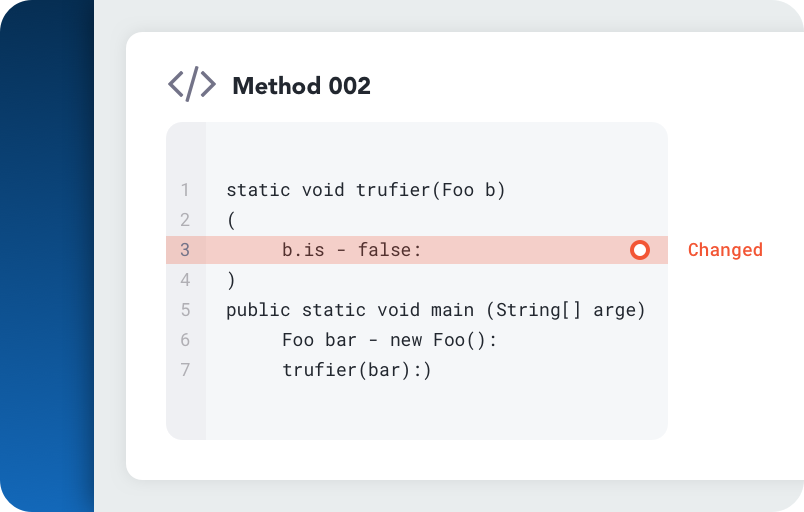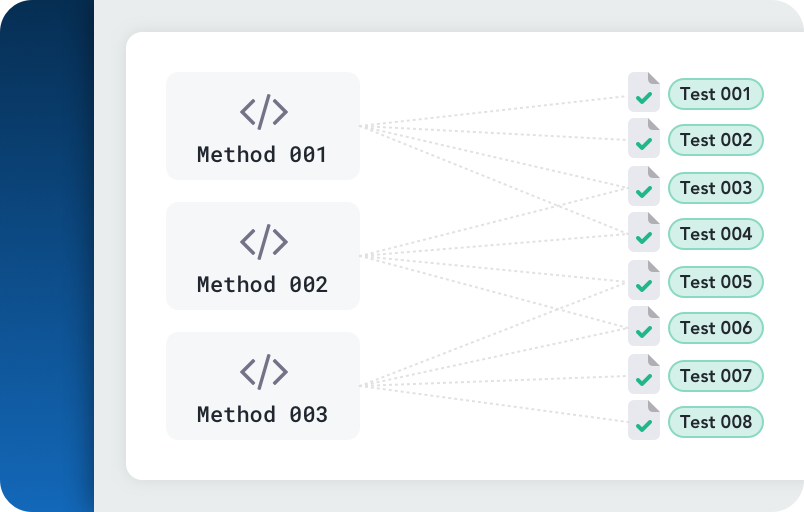
As software development teams continue to push for faster release cycles, it’s more important than ever to ensure that the quality of those releases is high and the costs of releasing are minimized. One key tool that can help with this is Test Impact Analytics.
Test impact analytics is like the detective of the testing world – it gathers all the clues and evidence to identify which tests are necessary and which can be safely eliminated. It’s like Sherlock Holmes, but for software testing.
The Benefits of Test Impact Analytics: Cut Costs, Speed Up Release Cycles, and Improve Quality
TOne major issue in the software development process is the lack of visibility between code changes and the tests related to those changes. This can result in the development, maintenance, and execution of unnecessary end-to-end (E2E) tests, wasting valuable engineering and QA resources.
Test Impact Analytics offers a solution to this problem by only running E2E tests related to the code that has changed. This can help teams cut costs and speed up release cycles without compromising on quality. In fact, Test Impact Analytics can actually improve quality by reducing the time to market.
Before using Test Impact Analytics, every code change was subject to the same tests as all previous code changes. This meant that developers and QA had to run full regression, E2E, and manual tests for each build, waiting hours or even days for the CI to finish running all the tests. QA teams also had to run all their manual and automated tests, no matter how long it took, for each significant modification of the product.
While each individual test may only take a few seconds or minutes to run, the overall time spent testing dozens of unchanged code can add up quickly. By using Test Impact Analytics to only run relevant tests, teams can save time and deliver their software sooner.
Eliminate Unnecessary Tests
One key benefit of test impact analytics is that it allows teams to identify and eliminate unnecessary tests. When teams are under pressure to release software quickly, it’s easy to fall into the trap of running every test available just to be sure. However, this can be a time-consuming and costly approach.
By analyzing which tests are actually necessary and which can be safely eliminated, teams can save time and money without sacrificing quality.
Identify Critical Tests
Another important aspect of test impact analytics is the ability to identify and prioritize critical tests. These are tests that have a high impact on the success of a release and should be given priority when it comes to testing and debugging. By focusing only on these tests, teams can ensure that the most important aspects of their software are functioning correctly before moving on to less critical tests.
Fail Faster
In addition to improving efficiency and reducing costs, Test Impact Analytics can also help teams identify patterns and trends in their testing process. By analyzing data on test performance, failure rates over time, and code changes in every build and release, teams can identify and address common issues that may be causing delays or failures in the testing process.
Test Prioritization is Not Enough
One key difference between test impact analytics and test prioritization is that test impact analytics focuses on identifying and eliminating unnecessary tests, while test prioritization focuses on ranking tests based on their importance. While both approaches can help teams save time and improve efficiency, test impact analytics takes a more comprehensive approach by analyzing the impact of all tests on the software development process and identifying which tests can be eliminated. On the other hand, test prioritization does not take into account the impact of tests on the overall testing process, meaning that teams may still need to run all tests in order to ensure a high level of quality. This can ultimately result in more time being spent on testing and a higher cost for releases.
How Does Test Impact Analytics Work?
SeaLights analyzes historical builds and matches each test with the methods it covers. It then detects code changes in the latest build and identifies which tests are impacted by those changes. The list of impacted tests is available in the dashboard (and also via an API) and can be fed back into the test framework to execute only those impacted tests. Alternatively, the impacted test list can also be fed back to the customer’s CI. By using Test Impact Analytics, teams can run only the relevant tests related to code changes, saving time and improving efficiency.
To summarize, here are some key reasons why test impact analytics is important:
- It helps teams identify and eliminate unnecessary tests: By analyzing data on test performance and code changes, teams can identify tests that are not providing significant value and can be safely eliminated. This can save time and money without sacrificing quality.
- It helps teams prioritize critical tests: By analyzing which tests are most important to the success of a release, teams can focus on the tests that matter most and ensure that they are functioning correctly before moving on to less critical tests.
- It helps teams identify patterns and trends: By analyzing data on test performance over time, teams can identify common issues that may be causing delays or failures in the testing process and take steps to address them.
- It helps teams optimize their testing process: By understanding how tests impact the software development process and how they can be optimized, teams can make informed decisions about how to allocate resources and improve efficiency.
- It helps teams meet the demands of faster release cycles: As software development teams push for faster release cycles, it’s more important than ever to ensure that the quality of those releases is high and the costs of releasing are minimized. Test impact analytics can help teams achieve these goals by identifying and eliminating unnecessary tests, prioritizing critical tests, and optimizing their testing process.
Overall, Test Impact Analytics is a crucial tool for teams looking to increase release speed while maintaining high quality and minimizing costs. By analyzing and optimizing their testing process, teams can ensure that they are releasing the best possible software as efficiently as possible.
If you’re looking to increase the speed and quality of your releases while minimizing costs, Test Impact Analytics is a must-have tool in your testing arsenal. It’s like having a detective on your team, helping you to solve the mystery of which tests are critical and which can be safely eliminated. So don’t just rely on test prioritization – make sure to incorporate Test Impact Analytics into your testing process to ensure maximum efficiency and effectiveness.
SeaLights maps code to test via Bytecode instrumentation
Analyzes every build to identify newly added code and code changes

Executes only the relevant tests based on code changes

